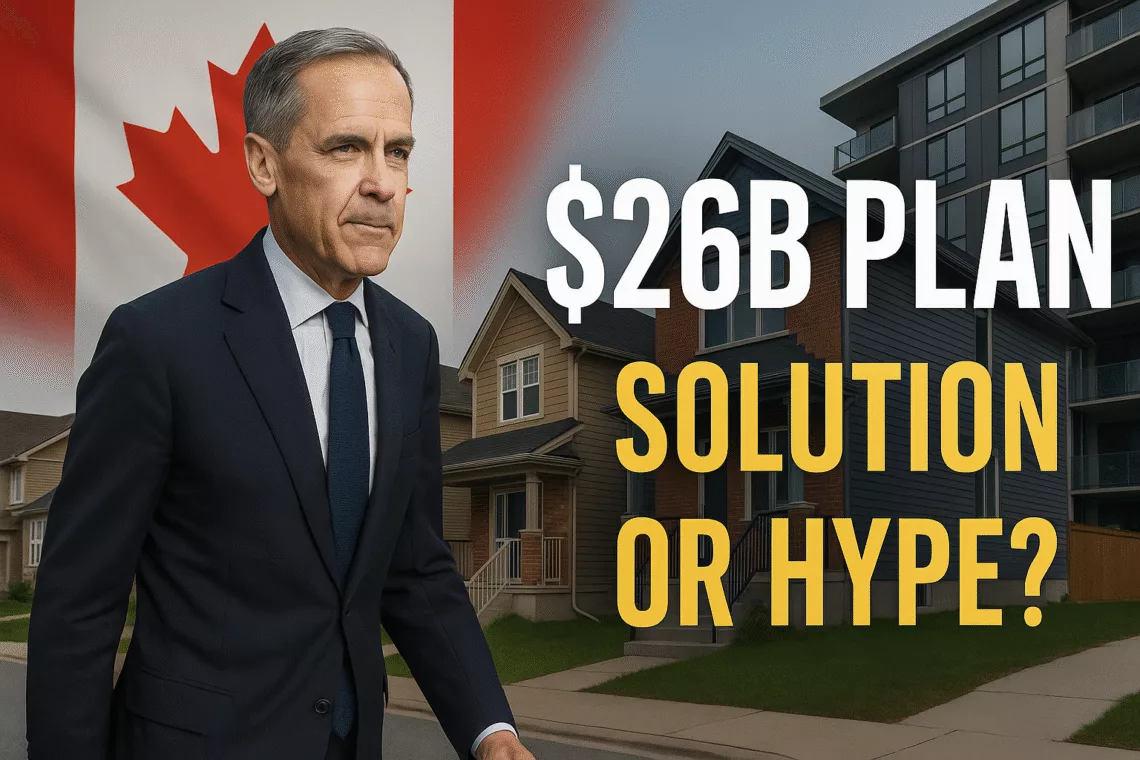
What if the solution to Canada’s housing shortage was already on the table, but just needed the right boost to take off?
With Prime Minister Mark Carney’s newly announced $26 billion prefab housing plan, the federal government is betting big on innovation to deliver more homes, faster. But will this investment be enough to turn the tide on Canada’s housing crisis?
Let’s break it down.
A Big Promise: $26 Billion to Speed Up Homebuilding
Carney’s plan includes:
- $25 billion in debt financing
- $1 billion in equity financing
All aimed at Canadian prefabricated homebuilders. The idea? Prefab and modular homes could cut building time by up to 50%, reduce costs by 20%, and lower emissions by 22%, according to government data.
This isn’t just about faster homes, it’s about reshaping how we build altogether.
Prefab Homes: Faster, Not Always Cheaper
Prefab homes are built in factories and assembled on-site. According to Kevin Lee, CEO of the Canadian Home Builders’ Association, the real strength of prefab housing is productivity:
“It allows us to build more homes with fewer people, crucial at a time when we’re facing a skilled labour shortage.”
But Lee also warns that prefab construction can carry higher upfront costs. Large investments in factory space and equipment can be risky, especially in Canada’s boom-bust real estate cycles. When the market slows, those costs don’t just go away.
So, while prefab offers speed, it’s not a silver bullet. Flexibility in how builders repay their loans—perhaps based on output rather than time, could be key to long-term success.
Can Canada Follow in Sweden or Japan’s Footsteps?
Countries like Japan and Sweden have successfully adopted prefab housing. But can Canada do the same?
Lee argues that direct comparisons don’t hold. Japan is dealing with a shrinking population and severe labour shortages. Sweden, with its harsh winters and smaller size, naturally turned to indoor construction methods.
Canada, on the other hand, is vast, decentralized, and still heavily reliant on traditional building. In more comparable nations like the U.S. and Australia, prefab housing remains rare.
Why This Still Matters for You
Whether you’re a homebuyer watching prices rise, a seller navigating market timing, or an investor looking for long-term trends, this initiative matters.
Prefab homes won’t solve everything, but they could reduce wait times, make housing more accessible, and spark innovation in construction.
If the government balances investment with flexibility and supports a range of building approaches, prefab housing could be part of a larger solution.
Looking Ahead: Real Solutions Need a Holistic Approach
Prefab homes might be a game-changer, but only if paired with smarter regulations, better financing, and a stronger workforce.
“No single fix will double Canada’s housing starts,” says Lee. “But working on all fronts gives us a real shot.”
For those navigating the real estate market in the Greater Toronto Area, staying informed on housing policies like this one could be the edge you need.
Stay Ahead in the Market
Looking for more real estate insights that matter to GTA buyers, sellers, and investors?
Follow our blog for expert updates or Contact us today for personalized support in this evolving market.
Contact Us
Equip yourself with the knowledge to navigate the complexities of the real estate landscape confidently.



